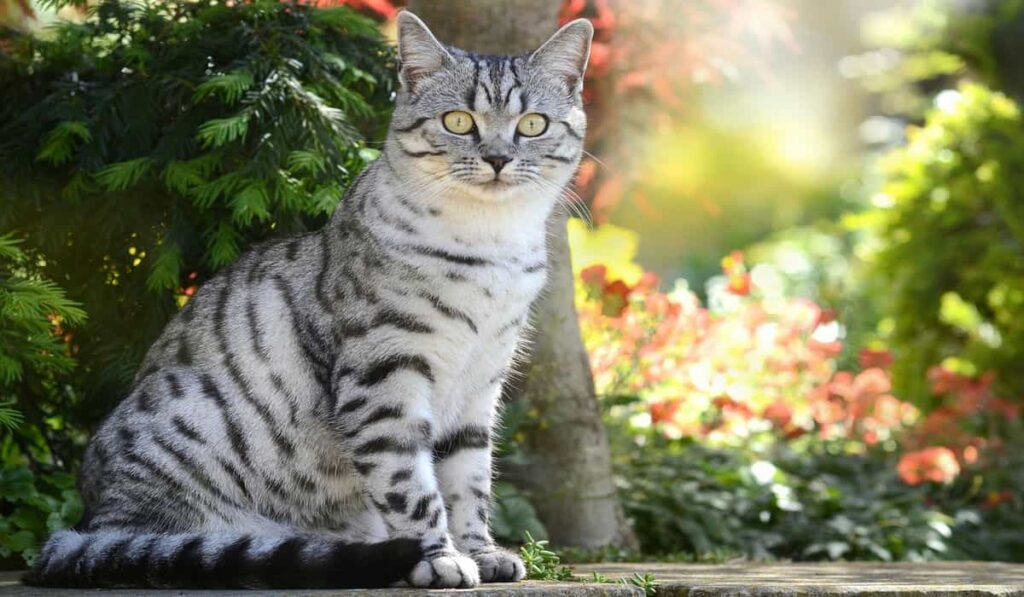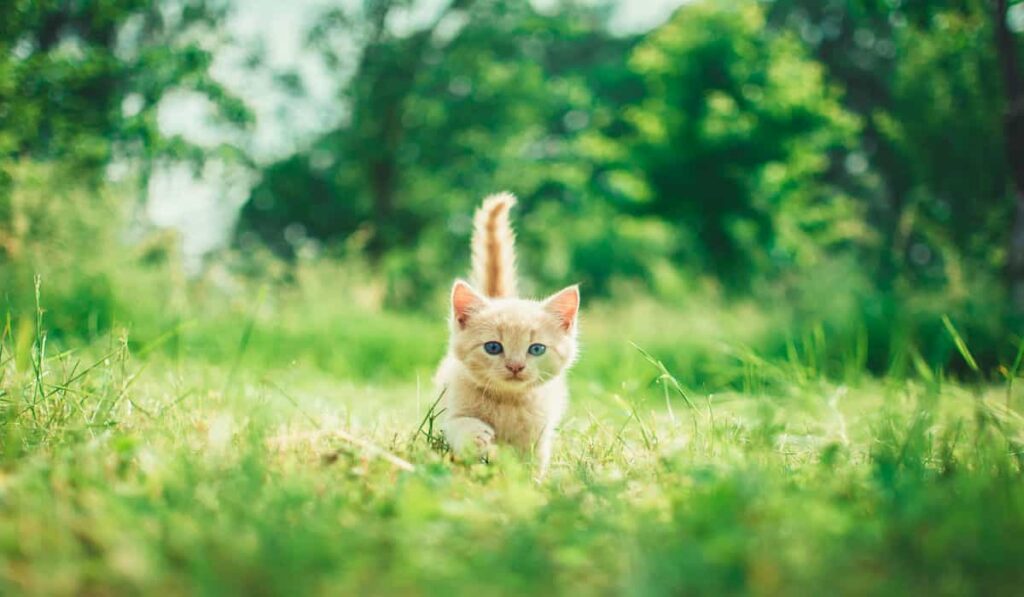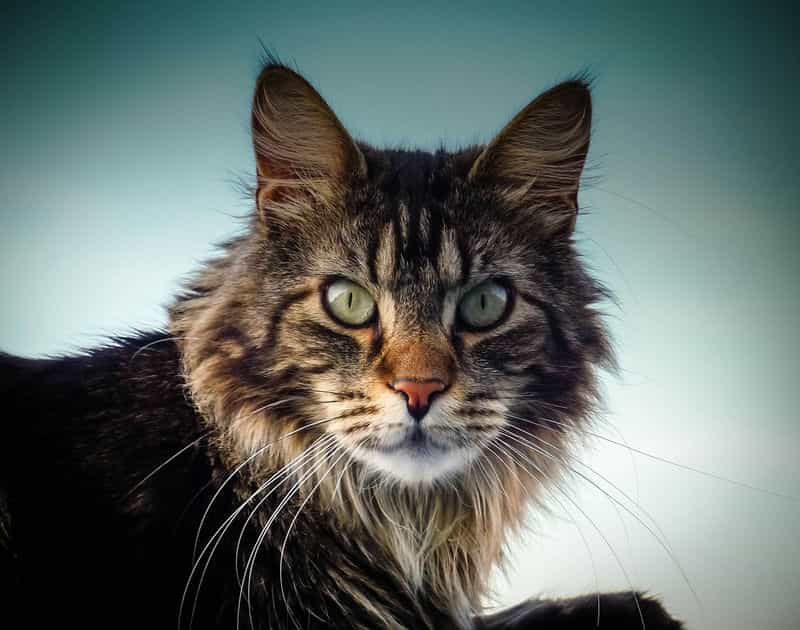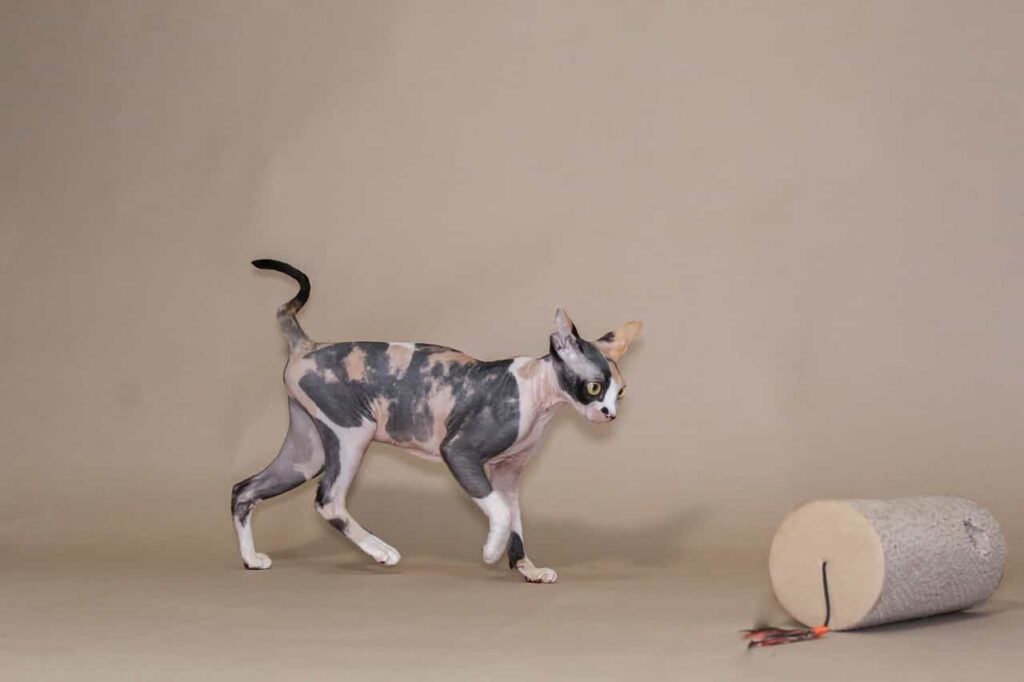Welcome to the captivating world of the Peterbald cat breed, a unique and enchanting breed that stands out in the feline world. With their distinctive hairless appearance and charming temperament, Peterbald cats are more than just pets; they are companions with a personality that captivates and delights. The journey into the realm of Peterbald cats is filled with discovery – from understanding their unique features, such as their distinct grooming needs and social behavior, to exploring the nuances of their diet and nutrition.
Each aspect of the Peterbald cat breed, from their intriguing history to their special care requirements, tells a story of elegance and uniqueness. As we delve deeper, you will learn about the joys of raising Peterbald kittens, the importance of skin care, and the process of adopting these graceful creatures. This guide aims to provide a comprehensive understanding of the Peterbald cat breed, ensuring that your experience with these extraordinary cats is as enriching and fulfilling as they are.
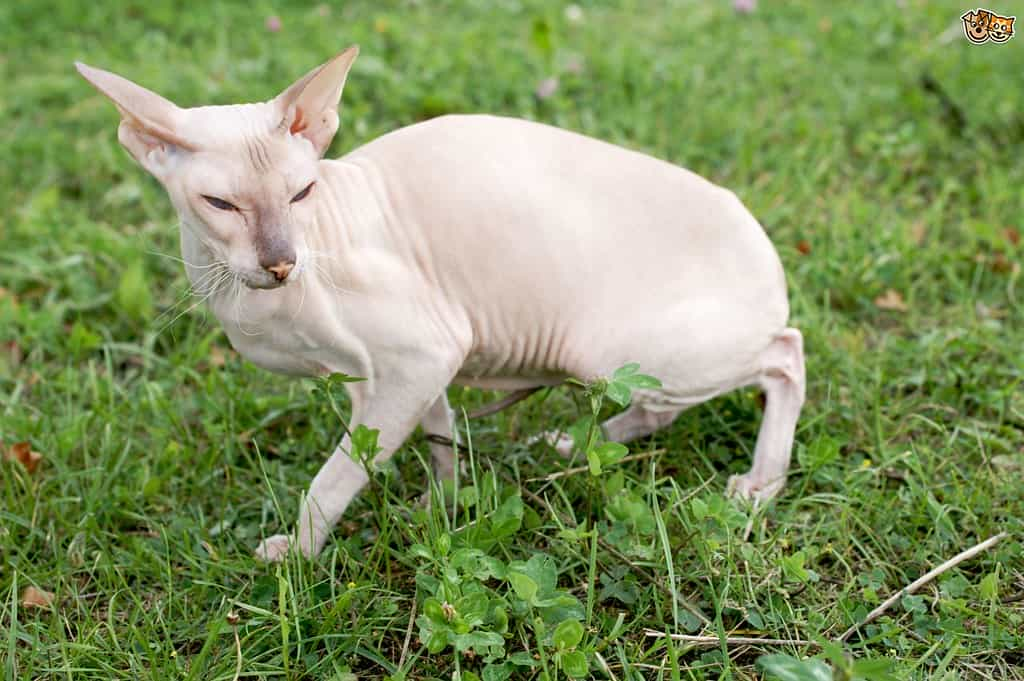

Table of contents
Peterbald cat Breed
Peterbald cats breed a very critical relationship with their coats throughout their life. Sometimes hairless cats result from crossbreeding between a male Sphynx cat, Afinogan Myth, and a female Oriental Shorthair, a World champion named Radma Von Jagerhov. Pertebalds birthplace is Saint Petersburg, Russia. Hence the breed’s name is after its birthplace.
Peterbald inherits both the traits of their father- the Sphynx cat and their mother- the Oriental Shorthair cat. It’s a competitively new breed and still developing.
Peterbald cat Breed specialty
Body length:
Up to 17 inches
Weight:
Up to 14 Pounds
Coat patterns:
Solid, Tabby, Bicolor, Colorpoint
Coat length:
Hairless and short
Coat colors:
White, Black, Lilac, Red, Orange, Ebony, Grey, Fawn, Silver, Lavender, and so on.
Eye color:
Any color
Personality:
Sociable, affectionate, intelligent, active, playful, interactive, outgoing, friendly with children, family, strangers, and other pets, and a good lap cat.
Other names:
Baldies
Vocalizing tendency:
Frequent
Life expectancy:
Up to 15 years
Maintenance:
High
Hypoallergenic: Yes
Origin: Russia
Origin of the Peterbald breed
As we already know, that Peterbald cat breed is a pre-planned inter-bred between a male Don Sphynx cat and a female Oriental Shorthair cat. A Russian breeder named Olga S. Mironova, who lived in Saint Peterburg, Russia, crossed the 2 cats, and the First Peterbald cat was born in 1994.
The breed is not as hairless as their ancestor Sphynx cats; they’re sometimes hairless and sometimes with very small hairs.
The cat Enthusiasts of St. Peterburg accepted the new breed.
Though the breed is still developing, The International Cat Association (TICA) accepted the breed in 1997, and it got championship status in 2005. TICA recognized the brush coat variety of Peterbald in 2008. Blue Belle was the first Brush coat Peterbald champion.
Though it’s a comparatively rare breed, Cat Fancier’s Association (CFA) also recognized the breed. The name Peterbald came from St. Petersburg.
The appearance of Peterbald cats
From short hair to no hair, a long face with big pointy ears and wrinkly skin, the Peterbald cats don’t look like your typical household cats; it has a different look. We are going to learn more about these unusual-looking cats. The Peterbalds closely resemble the Siamese types and the modern Orientals in their physical features.
Baldies have flat cheekbones, large and wide ears that are set- apart, a long muzzle, and long legs. Even all Peterbalds don’t look the same. There are slight variations in coat patterns that give a different look to them.
If any Baldy has furs on their body, there are two distinct types on the same body. The hairs may be soft and downy on the lighter sides of the body, while the darker sides are coarse and wiry. The coat may change in the first two years of their lives.
In that period, their hair texture may change; if your Peterbald kitten has longer hair, they can turn into short hair or completely lose their hair and become completely bald.
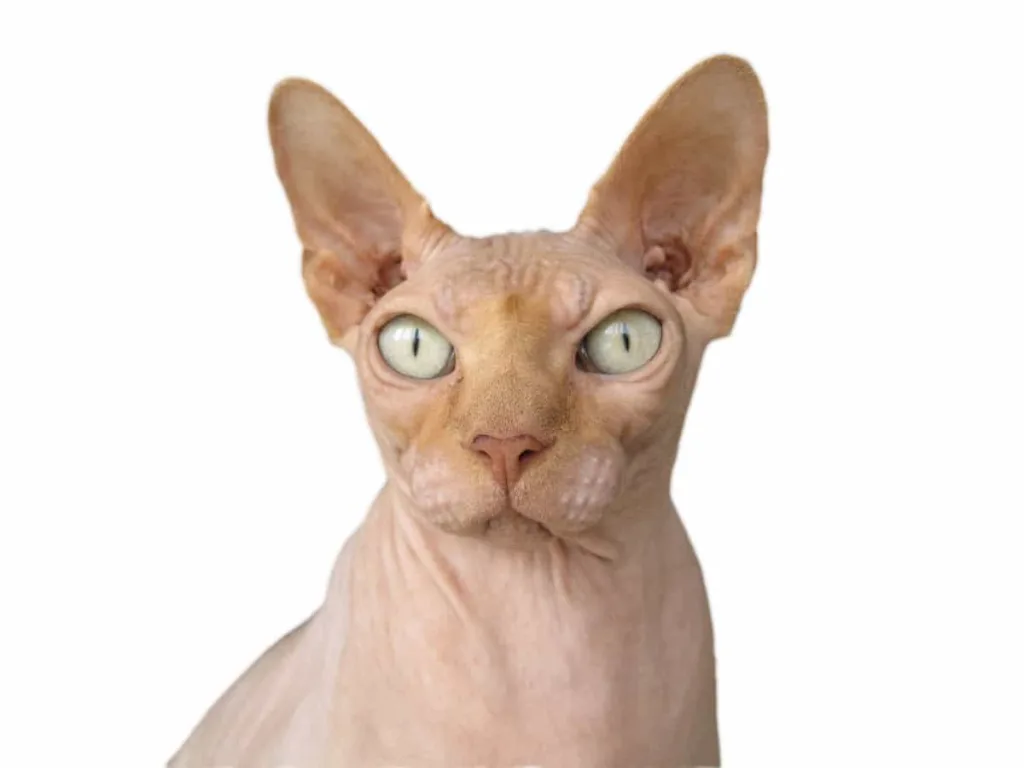

Now let’s look at the other features. The standard-sized Baldies have Almond-shaped eyes. Eyes can be any color and don’t depend on the coat color. Its long tail has a tapper end.
Medium-sized paws have prominent toes. The head is inverted and tri-angled, extending from the tips of its long broad ears to its chin. The ears are very big with pointed tips and a wide base. The body is long and firm, along with a well-developed muscular structure.
The coat may be hairless and smooth or with short and fine brushes. The baldies don’t have full hair in any variation. So, a full furry coat won’t be considered a Peterbald breed. The Baldies can come in any color. The Whiskers can be a bit dicey. They can appear wrinkled or curled. Sometimes, Peterbalds can be whiskerless.
Temperament and nature of Peterbalds
There is no unusual trait in Pertebald’s temperament and characteristics. It’s a friendly and lovable creature. When you bring it to your house as a kitten, it will soon become the loveliest family member. They follow their owners and other households across the house and love to tell about their days when they return home after a busy day.
They’re also very active and playful and love to get into your lap when they get a chance. They can match with people of all ages very easily. They also like to participate in any activity in the house. But they can’t be left alone for long hours and get bored when there is nothing to do or no one to interact with.
Basically, they aren’t dependent but want to be around family members and people. Their vocalizing tendency is very high. They frequently meow without any reason.
So, if you don’t want such a vocalizing cat, don’t have it. You better keep two or three Peterbald cats instead of just one.
They’re very interested, loyal, affectionate, fun-loving, whimsical, and dog-like creatures. They have loyalty towards their owners just like their owners. They have a good view of their surroundings and can match the environment according to the situation. Baldies are very stubborn and aggressive.
So, you need to give good training so bad habits aren’t developed in their characteristics. Train them as they come to your house and win the trust of the new householder.
grooming the Peterbald cat breed
As the Baldies are not longhaired and sometimes have hair, you don’t need to brush them daily or weekly. Your children and house are safe from their shedding all season. But, you need to worry about bathing your cat more frequently as its skin is bald and accumulates oils often. Peterbalds benefit more from baths than other furry cats because it’s easier to clean the build-up of their natural skin oil, which often causes irritation and acne.
You should give your Baldie weekly bath so they can stay clean and comfortable in their skin. The Sunheat or cold easily irritates them as they don’t have furs to protect them. They should be kept indoors so that Sunburn can’t make an impact on their skin.
During the cold winter season, Baldies should be covered with Blankets, heating pads, socks, and caps as they cannot protect themself from the cold as their other furry friends can. They must be supervised while playing with children or other people unaware of their bald bodies.
Their ears should be cleaned regularly as they are very large. Their teeth, nails, eyes, and noses should be cleaned like other cats. Overall, Peterbalds are high-maintenance cats.
Importance of the training and exercise of Peterbald cats
The Peterbald breed can be very stubborn and aggressive at times. So, it is very important to train them properly. Otherwise, their temperament and nature can become a problem for you and your family. So, from the first day after adoption, train your Petebald properly.
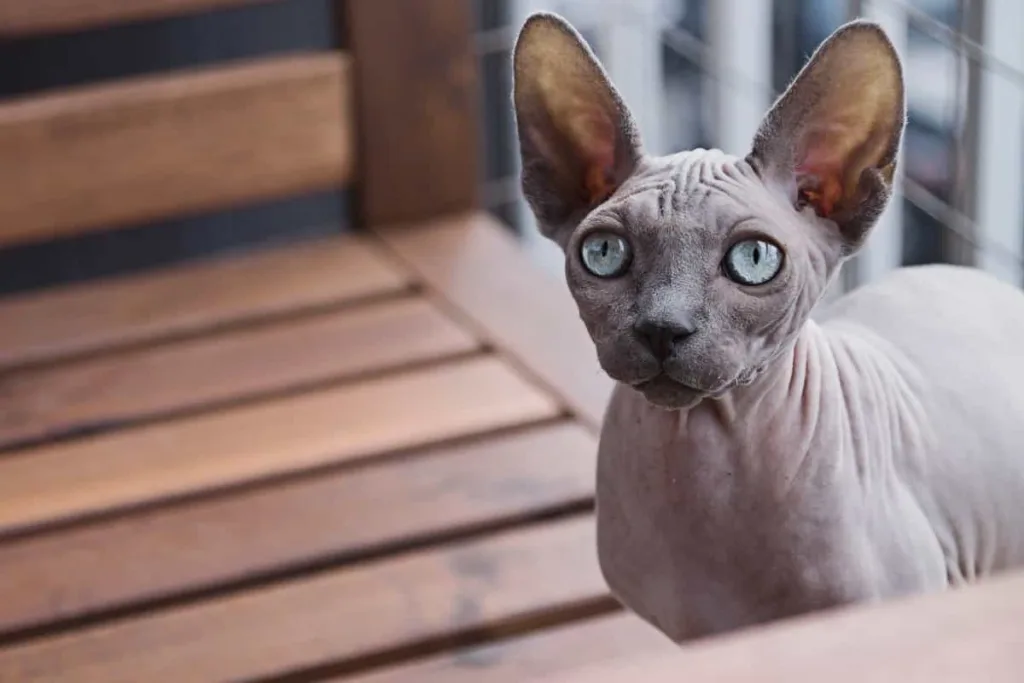

This training will also be an exercise for your pet. Let us have a look that how much training you can give your Peterbald:
- Leash training: There is no need to be extra careful to use LEASH and collars with this cat. They’ll be used with the leash for ⅔ days.
- Clicker training: a sound of a clicker clubbed with good behavior can change your stubborn Petrebalds behavior. It will work for positive reinforcement. Later, when your pet hears a clicker sound, it’ll understand that the clicker is a reward for its good work.
- Fetching and retrieving: throw something and look at this. Your cat will understand that it should do the same. They love the activity and get free from pressure from this.
- House and litter training: house training means teaching your pet what it can do or don’t in the house. There is any restricted place in your house that your Peterbald shouldn’t go to. So, start the training from the first day. You should start the litter training as well.
- Potty training: usually, a mother cat trains its kitten how to use the potty. But in special cases, if the kitten didn’t get the training from its mother, then the owner should do it.
At the very beginning, take your Peterbald near the litterbox. After some days, it will learn that it goes to the litter box to relieve itself.
Do’s and don’ts during training sessions for Peterbald cat
Do’s
- Your pet will change your life till it is alive. So, give some time in training sessions to learn it properly. You must keep patience.
- Spare some time to love your pet besides training sessions.
- Stat the training sessions immediately after adoption.
- Apply different pieces of training according to the cat’s breed.
- Use training accessories and tools. It will make the training sessions enjoyable and effective.
Don’ts
- Don’t continue the training sessions if your cat doesn’t trust you. So, build the trust first, then start the training.
- Don’t shout and get mischievous with your Peterbald, as you know that they’re very stubborn, so it can bring a reversed result. So, have patience and be sweet to the new family member.
Living needs of Peterbald cats
Petrbald cats are very active and playful. So need plenty of toys and opportunities to play, like jumping, climbing, and stalking. You can’t find the favorite play for the cats because either they’ll like your playing plan or ignore it.
They may like the feather toy or bouncy balls to play with. Some Peterbalds are so smart that they will discover new playing outside. So, make a perfect game plan for your one. Otherwise, they’ll get bored and do anything for entertainment and mental stimulation.
What about the living condition? The breed is vulnerable to cold and Sunburn. So, an open house is not suitable for them. They don’t do well in cold and Sunny houses.
A cozy home, enclosed outdoor space with plenty of shades, a cat play tent, or a catio will be the best for Peterbald cats. Remember that Peterbalds are very clever creatures. So, you should keep a child-lock system on the doors, drawers, and cupboards to keep those safe from Peterbald. So, arrange your house like that; the clever creature spends some time napping instead of exploring.
Health and problems of Peterbald
As a new breed, Peterbalds are blessed with sound health. They’re not prone to severe diseases except skin issues such as sensitivity to hot and cold weather, Sunburn, and injuries due to easily-cut and delicate skin. Besides, Peterbalds live a healthy life if they’re fully vaccinated.
Food and nutrition that Peterbald needs
Baldies have a big appetite. You’re advised to provide them with a high-quality Protein diet. Peterbalds have a much higher metabolism than any other cat with full-furred coats. They need a good diet in terms of quality and quantity.
It is very important to keep them well-fed and to monitor their Calorie intake. They shouldn’t be underfed or overfed as the feeding amount soon becomes visible in their bodies. Please consult your veterinarian about the food and nutrition requirements of your Baldy.
Some facts about the breed- Peterbald
Peterbald’s Bat-like ears keep growing till adulthood, while other body parts stop growing.
- Though they’re sometimes bald, they have some coat patterns- Naked, Chamois, Flock, Brush, and Straight.
- If they crossbreed, the children will inherit Peterbald’s hairlessness because it is so prevalent.
- Peterbalds are similar but not the same as their ancestors- Sphynx and Oriental Shorthairs.
- The breed’s coat can be changed in the first 2 years of its life. The coat texture can be altered, gained, or lost.
- Nocturne Iz Murino is the first Peterbald cat, and it is found in every Peterbald pedigree.
- The breed is dog-like. That means they’re affectionate like dogs. Don’t be surprised if you see your Peterbald roaming around you and waiting to spend some time in your lap and share the love with you.
- Their coats can be lost or altered at first.
Years of age. That means their coats can be changed.
- When you sit with a cup of tea and snacks, your Peterbald will sit beside you to hear about your busy and hectic day. They also love to tell you about their day.
Male VS female of Peterbalds:
In every animal species, males are bigger than females. So, Peterbalds are not different in this case. Otherwise, the personality and characteristics are the same in the male and female Peterbalds.
Cons of the Peterbald breed:
- Highly sensitive to extreme temperatures, both cold and hot.
- A very stubborn and aggressive breed if not trained from the beginning.
- They need a lot of training than the other breeds. So, if you don’t have the time and patience, then Peterbald may not be the best for you.
- Prone to get injured from their baldness.
Peterbald overview:
An extremely energetic and outgoing cat breed. They’re independent; however, they have a strong bond and affection with their families, including toddlers, children, and other pets. They’re dog-like, want to be involved with their family activities, and use their vocals to communicate with the family members.
Search on cat associations’ websites to get lists of reputable breeders. You also go to the local cat shows, rescue groups and shelters to get your adorable cats, but the breed is expensive, so there is little chance of getting them from shelters and rescue groups.
Peterbald Cat Breed Food and Nutrition
When it comes to the Peterbald cat breed, understanding their food and nutrition needs is essential for maintaining their health and vitality. The diet and nutrition for Peterbald cats should be carefully considered, as their unique physical characteristics demand specific nutritional requirements. These cats, known for their slender bodies and high metabolism, benefit from a high-protein diet that supports their energy levels and muscle maintenance. Quality wet food, rich in animal proteins and low in carbohydrates, aligns well with their dietary needs, also providing the necessary hydration often lacking in their diet.
Special attention should be given to the unique features of Peterbald cats, such as their hairless skin, which can be sensitive. Nutrients like omega-3 and omega-6 fatty acids are crucial for maintaining healthy skin. Supplements may be necessary, especially if the diet does not fully meet their needs. Moreover, Peterbald cats’ grooming needs and skin care are linked to their diet; a well-balanced diet can lead to healthier skin, reducing the risk of skin irritations or allergies.
It’s also vital to monitor their food intake and ensure they are not overfed, as obesity can lead to significant health concerns in Peterbald cats. Regular consultations with a veterinarian can help in tailoring a diet plan that suits individual cats based on their age, weight, and health status. Keeping in mind these dietary considerations, along with a knowledge of Peterbald cat health concerns, owners can provide their pets with a diet that ensures a long, healthy, and happy life.
Peterbald Cat Breed Grooming Guide
Grooming is an integral part of caring for a Peterbald cat, a breed renowned for its distinctive hairless appearance. The grooming needs of Peterbald cats are unique, requiring a routine that differs significantly from that of their furry counterparts. Regular bathing is crucial, as their hairless skin tends to accumulate oils and dirt more quickly. Use a gentle, cat-specific shampoo to keep their skin clean without causing dryness or irritation. Bathing too frequently, however, can strip their skin of natural oils, so finding the right balance is key.
Skin care for Peterbald cats is also paramount due to their exposure. Moisturizing with vet-recommended products can help prevent dryness and promote healthy skin. It’s important to check regularly for any signs of skin issues like acne or irritation, which are more common in hairless breeds. Beyond skin care, Peterbald cats’ grooming routine should include regular nail trimming, ear cleaning, and dental care – essential practices to prevent common health problems in Peterbald cats.
Despite their lack of fur, grooming is a bonding experience for Peterbald cats and their owners. It’s a time for close interaction, which aligns with the Peterbald cat’s social behavior and temperament. This breed enjoys human company, and grooming sessions can further strengthen the bond between cat and owner. Adhering to a consistent grooming routine ensures not only the health and comfort of the Peterbald cat but also enhances their overall well-being.
Peterbald Cat Breed Adoption Guide
Adopting a Peterbald cat is a wonderful and rewarding experience, yet it requires careful consideration and preparation. When considering adopting a Peterbald cat, it’s essential to understand their unique temperament, grooming needs, and health concerns to ensure that you can provide a suitable home for them. Researching reputable breeders or rescue centers that specialize in Peterbald cats is crucial. These organizations should offer healthy cats with verifiable health histories and transparent breeding standards.
During the adoption process, familiarize yourself with the unique features of Peterbald cats, such as their hairless skin and the care it requires. Discuss with breeders or rescue center staff about the specific needs of the cat, including diet and nutrition, exercise requirements, and any special attention needed for their skin care. It’s also important to consider the Peterbald cat’s social behavior and how they will fit into your household. These cats are known for their affectionate and sociable nature, so they often do well in environments where they can interact and be part of the family.
Once you have adopted a Peterbald cat, the first few weeks are crucial for acclimatization. Ensure you have a comfortable and safe space ready for them, along with all the necessary supplies for their care. Gradually introduce them to their new environment and other household members, including other pets. Keep in mind that like all cats, Peterbalds need time to adjust to new surroundings. With patience, love, and proper care, adopting a Peterbald cat can be a deeply fulfilling experience, bringing joy and companionship to your life.
Socializing Your Peterbald Cat
Socializing your Peterbald cat is a crucial aspect of their overall care and well-being. Given their notably friendly and affectionate temperament, Peterbald cats often enjoy and benefit from social interaction. Early and consistent socialization can help develop a well-rounded and confident cat. Introduce your Peterbald to various people, environments, and other pets in a controlled and safe manner. This not only enhances their adaptability but also fosters their natural sociable nature.
Engaging in playful activities for Peterbald cats is a great way to socialize and bond with them. These activities should cater to their active lifestyle and intelligence. Use interactive toys, puzzle feeders, and engage in games that stimulate their curiosity and physical agility. It’s important to remember that each cat is unique, so pay attention to your Peterbald’s individual preferences and comfort levels during social interactions.
Creating a positive environment for socialization involves understanding and respecting their boundaries. Never force interactions; instead, allow your Peterbald to approach new situations at their own pace. Regular and gentle handling can also aid in socialization, making routine grooming and vet visits a more comfortable experience. Remember, a well-socialized Peterbald cat is likely to lead a happier and more fulfilling life, enriched by the strong bonds they form with their human family and their environment.
Peterbald Cat Breed Maintenance and Safety Guide
Caring for a Peterbald cat involves a dedicated approach to their maintenance and safety, ensuring they live a healthy and fulfilling life. The maintenance of a Peterbald cat goes beyond regular grooming; it encompasses a holistic approach to their health, diet, and living environment. Due to their hairless nature, one of the unique features of Peterbald cats, they are more susceptible to temperature changes. It’s important to maintain a warm and stable environment, especially during colder months, to prevent them from getting too cold. In contrast, during warmer periods, they require protection from the sun to avoid skin damage.
In terms of diet and nutrition for Peterbald cats, providing a balanced diet that meets their specific needs is essential. High-quality food that supports their skin health and overall well-being is recommended. Regular veterinary check-ups are crucial to monitor and address any health concerns in Peterbald cats, including common allergies and skin conditions.
Safety within the home is another important aspect. Peterbald cats are curious and active, so ensuring that the home environment is cat-proofed and free from hazards is essential. This includes securing windows and balconies, removing toxic plants, and keeping harmful substances out of reach. Regular exercise and mental stimulation are also key components of their care, aligning with the Peterbald cat’s exercise needs and social behavior.
Conclusion
In conclusion, the Peterbald cat breed, with its distinctive hairless appearance and affectionate nature, offers a unique and rewarding experience for cat enthusiasts. Embracing the responsibilities of Peterbald cat care, from specialized grooming needs to their specific diet and nutrition, is essential in ensuring these cats lead a healthy and joyful life. Their sociable temperament and playful activities bring a special charm to any home, creating lasting bonds with their human companions. The journey of adopting and socializing a Peterbald cat is filled with learning and love, contributing to the enrichment of both the cat’s life and the lives of their owners.

